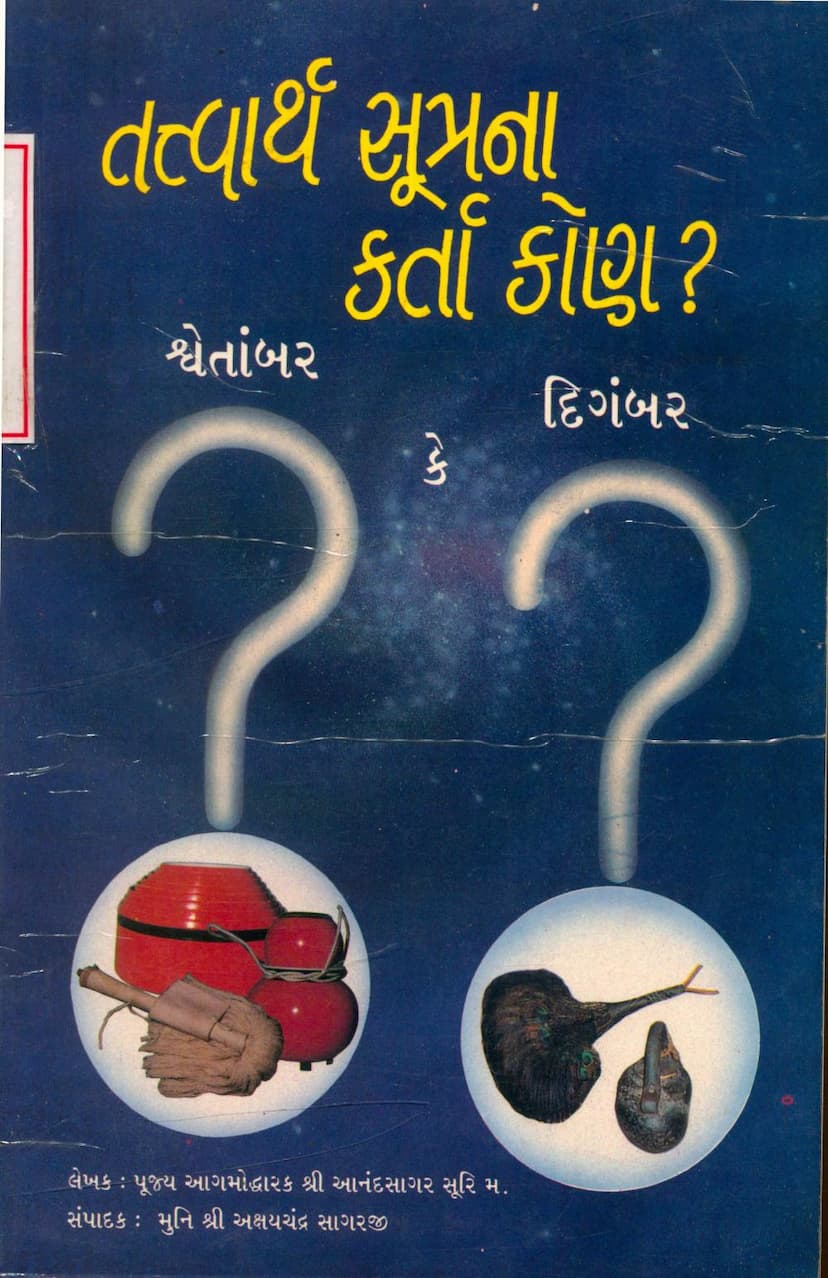Tattvartha Sutrana Karta Kon Shwetambar Ke Digambar
Added to library: September 2, 2025

Summary
This book, "Tattvartha Sutrana Karta Kon: Shwetambar Ke Digambar?" (Who is the author of Tattvartha Sutra: Shwetambar or Digambar?), authored by Pujya Agamoddharak Shri Anandsagar Suri M., and edited by Muni Shri Akshaychandra Sagarji M., explores the long-standing debate within Jainism regarding the authorship of the Tattvartha Sutra.
The central thesis of the book is that the Tattvartha Sutra is a Śvetāmbara work, authored by Umaswati Vacak. The book extensively argues this point by:
- Analyzing the Tattvartha Sutra's Content and Style: The authors meticulously compare the Tattvartha Sutra with existing Jain scriptures, particularly those accepted by both the Svetambara and Digambara traditions. They highlight numerous instances where the Sutra's concepts, classifications, and terminology align more closely with Svetambara doctrines and interpretations.
- Highlighting Differences in Sutra Text and Interpretation: A significant portion of the book is dedicated to detailing the discrepancies found in the sutra text and their interpretations between the two sects. The book presents a detailed analysis of these differences, presenting arguments for why the Svetambara version is considered more authentic and closer to the original intent.
- Critiquing Digambara Claims: The book directly addresses and refutes claims made by the Digambara tradition regarding the Tattvartha Sutra's authorship and interpretation. It argues that Digambara interpretations often misrepresent or omit certain aspects, or introduce new elements, to fit their own sectarian views.
- Examining the Commentary (Bhashya): The book places significant emphasis on the Bhashya (commentary) attributed to Umaswati. It argues that the Bhashya itself provides internal evidence of the author's identity and aligns with Svetambara traditions. The authors also address why the Digambara tradition rejects this Bhashya.
- Historical and Linguistic Arguments: The book delves into historical and linguistic analyses, including the names associated with the author (Umaswati Vacak for Svetambaras and Umaswami for Digambaras) and the linguistic style, to support the Svetambara claim.
- The Necessity of the Tattvartha Sutra: The book posits that Tattvartha Sutra was created as a concise and accessible summary of Jain philosophy, making it suitable for wider study and understanding, especially for those who might find the extensive Agamas difficult to grasp.
Key Arguments Presented:
- The Tattvartha Sutra's comprehensive nature: It encapsulates various branches of Jain knowledge, including cosmology, metaphysics, ethics, and the path to liberation, in a structured and digestible format.
- Author's identity: The book strongly supports the Svetambara view that the author was Umaswati Vacak, a scholar and former exponent of the twelve Angas, particularly the Dasapurvi knowledge.
- Svetambara perspective on various doctrines: The book details how the Tattvartha Sutra's treatment of topics like the nature of souls, senses, karma, liberation, the number of elements, hellish beings, heavens, the classification of Jivas, the understanding of mind, the concept of time, the definition of austerities, the nature of the liberated soul, and various rituals and practices align with Svetambara traditions.
- Digambara deviations: The book meticulously points out how Digambara interpretations and textual variations often deviate from the presumed original structure and intent of the Tattvartha Sutra.
- The Bhashya as crucial evidence: The commentary is presented as a vital piece of evidence, demonstrating the author's own understanding and intent, which the book argues is consistent with Svetambara viewpoints.
In essence, this book is a detailed polemic from the Svetambara perspective, aiming to definitively establish the Tattvartha Sutra as a Svetambara text authored by Umaswati Vacak, while simultaneously critiquing and refuting the Digambara claims to the contrary. It is a scholarly examination of sectarian differences within Jainism through the lens of a seminal philosophical text.